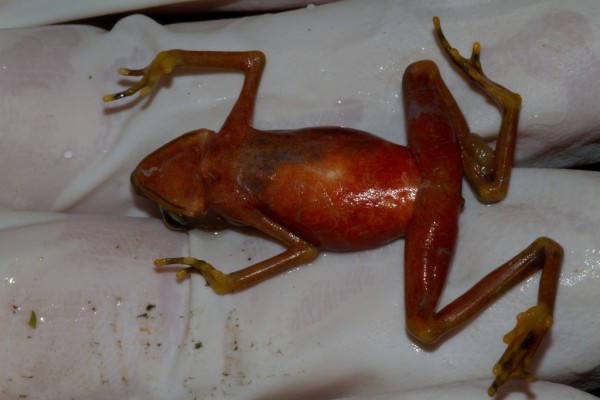
Defenders of Wildlife has submitted a proposal to the U.S. Fish and Wildlife Service to ban the importation of live frogs unless they are accompanied by a health certificate verifying that they are free of the chytrid, which killed the frog shown here. (Photo by Brian Gratwicke, Smithsonian Conservation Biology Institute)
The global amphibian trade has been indicted as the culprit in the spread of the deadly chytrid fungus. A study published in New Scientist calls for an amphibian quarantine to help slow the disease’s spread.
The study sequenced the genomes of 20 samples of Bd, collected in Europe, Africa, North and South America and Australia. They found that 16 of the 20 samples were genetically identical.
The researchers say the explanation for this is simple, that world-wide trade in amphibians enabled the spread of this disease.
The researchers suggest that countries quarantine all imported amphibians and only allow them to stay if they are not infected.
Defenders of Wildlife, a partner in the Panamanian Amphibian Rescue and Conservation Project, has submitted a proposal to the U.S. Fish and Wildlife Service to ban the importation of live frogs unless they are accompanied by a health certificate verifying that they are free of the chytrid fungus.
“Billions of frogs are traded internationally each year for human consumption, and that industry is responsible for depleting wild populations, spreading deadly disease, and allowing invasive species to destroy the health of native ecosystems,” said Alejandra Goyenechea, counsel for the international conservation programs for Defenders of Wildlife.
Defenders is working with the upcoming CITES Animals Committee to ensure that the international trade of frogs is not detrimental to their survival and with CITES Parties to bring awareness on the international trade of frog legs with our report.
—Cindy Hoffman, Defenders of Wildlife
